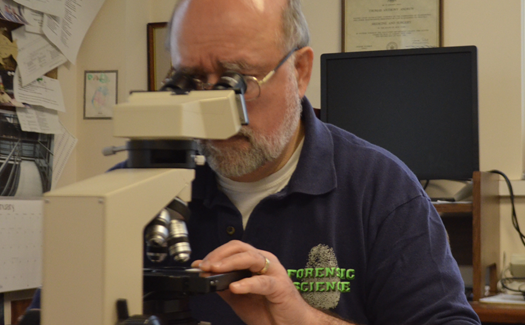Dr Andrew offers examples where the timing of injuries offers more insight into the cause of death than the time of death alone.
Much is made in fictional accounts of forensic science of time of death determinations. In actual practice, these are estimates with associated ranges. It is a process made difficult by many physical and environmental variables that must be taken into account. These estimates are not speculative guesses, but neither do they have great scientific precision. 
Estimating the timing of injuries or disease processes with the aid of the microscope, on the other hand, offers a level of scientific certainty not possible in the subjective assessment of rigor mortis or given the vagaries of an environment in which a body is discovered.
Here are some examples:
Missed diagnosis or unfortunate turn of events?
A 54-year-old man dies suddenly and unexpectedly at home four days after an emergency room visit for back pain. Autopsy reveals a blood clot in a major coronary artery and myocardial infarction as the cause of death. In the ensuing lawsuit the estate of the decedent contends the emergency room physician missed an incipient infarction. Careful review of the tissue samples under the microscope proves the clot is less than 24 hours old and the infarction is in the 12 to 24-hour range. The jury finds for the defendant physician.
Slam dunk or whodunnit?
A 6-month-old girl becomes unresponsive while in the sole care of a 20-year-old man who calls 9-1-1. The man is the new boyfriend of the baby’s mother and not the father of the child. He moved in three days prior to the incident. Social dynamics are extremely disordered. The infant is pronounced dead in the emergency room and subsequent autopsy reveals multiple broken ribs and a subdural hematoma. The boyfriend, the only one with the baby from 7:30 AM when the mother left for a clinic visit until his 9-1-1 call at 10:00 AM, is indicted for the death of the baby. Microscopical dating of the rib fractures ranges from 3-5 days to up to three weeks. The edge of the subdural hematoma has microscopical features of being several days old. Could this provide reasonable doubt at trial?
Not every cough is a cold
An obese 24-year-old woman on birth control pills is evaluated in an urgent care clinic for three days of cough with increasing shortness of breath. She has a slight fever. Her breath sounds are good and chest x-ray is read as normal. She is diagnosed with “bronchitis” and discharged on antibiotics. She collapses at work two days later and cannot be resuscitated. Autopsy discloses a large pulmonary thromboembolism emanating from a blood clot in her left leg. The estate sues. The defendants counter that death was unrelated to her presentation two days prior. The microscope confirms the very recent nature of the pulmonary embolism, but there are also showers of tiny emboli in small vessels of the lungs showing organization consistent with 5-7 days. Organization of the leg clot suggests its presence for weeks. The case is settled before trial.

